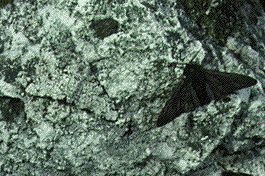The theory of natural selection (part 2) - How can we measure fitness?

The fitness of a genotype measures its relative ability to reproduce itself, compared with other genotypes.
Fitness shows to what extent a genotype is favored by natural selection. Fitness values are between 0 and 1. The fittest value has a score of 1 and the fitness of the other members of the population can be expressed as 1 - s , where s is the selection coefficient.
The fitness of genotypes is the most important variable in the theory of evolution, determining which genotypes we can expect to see in the world today.
There are three methods for measuring fitness:
1. Measure the relative survival of the genotypes within a generation. Kettlewell's mark-recapture experiment with the peppered moth is an example.
2. Measure changes in gene frequencies between generations. We then substitute the measurements into the formula that expresses fitness in terms of gene frequencies in successive generations.
3. Measure deviations from the Hardy-Weinberg ratios - this is used in estimating fitness in the case of sickle cell anemia.
The image opposite shows the original and melanic forms of the peppered moth, made famous by Kettlewell's experiment. In this image both moths are on lightly colored tree branches and it is the melanic form which is without camouflage and therefore has a lower fitness.
The geneticist Linda Partridge gives the definition of fitness which she uses when studying populations.
| Next |



